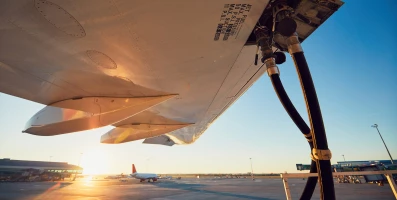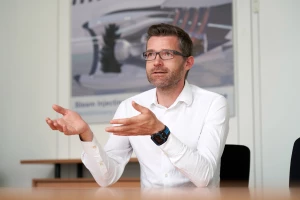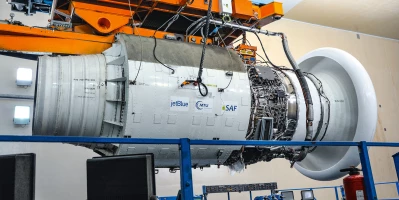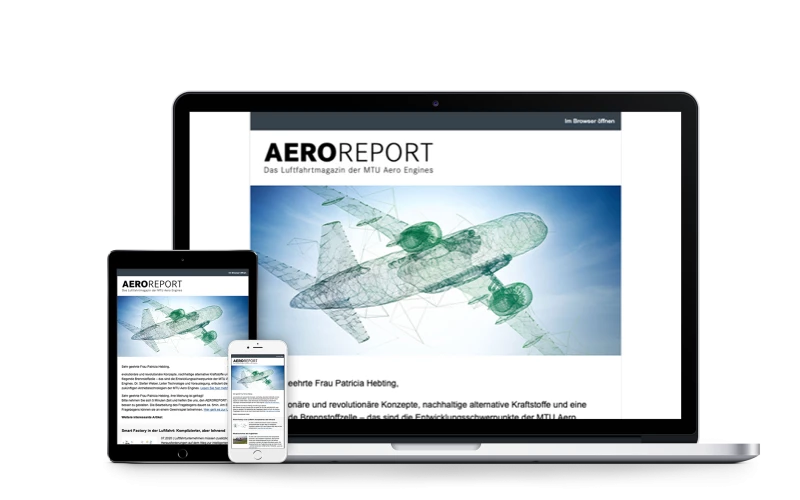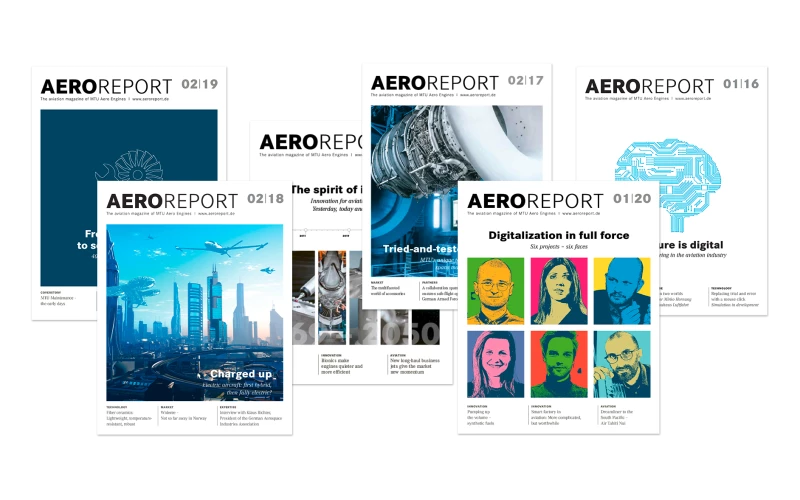innovation
Alternative fuels for the aviation of tomorrow
To achieve the climate protection goals for aviation, sustainably produced fuels are essential. The first production processes for biokerosene have reached maturity.
04.2018 | author: Nicole Geffert | 6 mins reading time
author:
Nicole Geffert
has been working as a freelance journalist covering topics such as research and science, money and taxes, and education and careers since 1999.

Plants, wood, straw and algae-most of us would not immediately associate this list with aviation fuels. Yet these raw materials can be used to make alternative fuels to make more climate-friendly aviation possible. The International Civil Aviation Organization has set ambitious goals for the sector: aviation growth is to be carbon-neutral from 2020, and CO2 emissions from aviation are to be halved by 2050 compared to 2005 levels.
Although the manufacturers of aircraft and engines continuously optimize their products, that alone is not enough to achieve the climate protection goals. “Alternative fuels with a much smaller carbon footprint are essential for sustainable aviation,” says Dr. Jörg Sieber, who is responsible for innovation management at MTU Aero Engines. “In addition, we have to reduce pollutant emissions to alleviate damage to the environment.”
MTU is strongly advocating the introduction of sustainable kerosene,for example, through its work in the Bauhaus Luftfahrt think tank and in the Aviation Initiative for Renewable Energy in Germany (aireg) association, which brings together airlines, manufacturers and research institutes-with the goal that 10 percent of the kerosene used in Germany by 2025 will come from alternative raw materials. This corresponds to 1.1 million tons of fuel required every year.
Several alternative fuels already approved for aviation
Several alternative fuels have already been approved for flight operations. These drop-in fuels can be mixed with conventional Jet A-1 kerosene and meet the high quality and safety requirements for aviation fuels. Because of the ranges involved, aviation fuels must have a very high energy density as well as a high flash point and a low freezing point. After all, temperatures at cruising altitudes are minus 50 degrees Celsius.
Scientists are not lacking in ideas for methods of converting biomass-from energy crops, for example-into fuel. The experts at aireg currently see the greatest potential in a conversion process which uses the hydration of vegetable oils, specifically hydro-processed esters and fatty acids (HEFA). HEFA biokerosene meets the specifications for fossil kerosene and has been successfully tested, and now the process has reached maturity. The biofuel has been ASTM-approved since 2011 and is already being used in large volumes in passenger air transport for testing purposes.
Reducing greenhouse gases by at least 60 percent
In addition, analyses are available on greenhouse gas emissions and other environmental impacts. The results show that HEFA is able to comply with the requirements of the European Union’s Renewable Energy Directive under certain boundary conditions. To ensure that biofuels actually offer advantages with regard to climate, this directive stipulates that as of 2018 they must demonstrate greenhouse gas reductions of at least 60 percent compared to fossil fuels.
Another approved production method is biomass to liquid (BtL), which chiefly uses wood as the biomass. Experts view the technology as extremely challenging on the whole, which makes cost-effective production difficult at present-although BtL-produced biokerosene has been ASTM (American Society for Testing and Materials)-certified since 2009.
“New fuels have to go through a lengthy, complicated certification process. The model allows you to estimate the potential of a new fuel before embarking on costly laboratory testing.”
Evaluation model for alternative fuels
How can the potential of a new fuel be evaluated in advance? As part of the “InnoTreib” project, researchers from the German Aerospace Center (DLR), Hamburg University of Technology (TUHH) and the University of Stuttgart developed a model that can be used to design sustainable fuels on a computer. “New fuels have to go through a lengthy, complicated certification process. The model allows you to estimate the potential of a new fuel before embarking on costly laboratory testing,” says Professor Manfred Aigner, Head of the Institute of Combustion Technology at the German Aerospace Center. Another expert to give a positive verdict is Professor Martin Kaltschmitt, Head of the Institute of Environmental Technology and Energy Economics at TUHH: “The methods developed in the project allow us to identify promising combinations, showing how sustainably produced biofuels can be used as efficiently as possible in aircraft engines.”
Fuel generation with wind power and solar energy
Non-biogenic processes could also offer long-term alternatives. Working together in the SOLAR-JET project, an international group of researchers has managed to produce aviation fuel out of sunlight, water and carbon dioxide for the first time. This alternative fuel has the considerable advantage of being based on almost unlimited resources. Another pioneering technology is the power-to-liquid method, which uses wind power and solar energy to generate hydrogen, which is then synthesized into hydrocarbons by adding carbon dioxide and processed into a liquid fuel.
These examples show that there is a lot happening in the sector. And yet the biggest challenge consists in making the processes more cost effective. Biofuels still cost twice as much or more than conventional kerosene. Consequently, engineers worldwide are working on solutions to reduce costs.
For the present, sustainably produced kerosene is the only game in town. The ability to power large aircraft by purely electrical means still lies far off in the future. Sustainable drop-in fuels, by contrast, can be used in today’s aircraft, which-given their long service lives-will be carrying goods and people to their destinations for many years to come.







